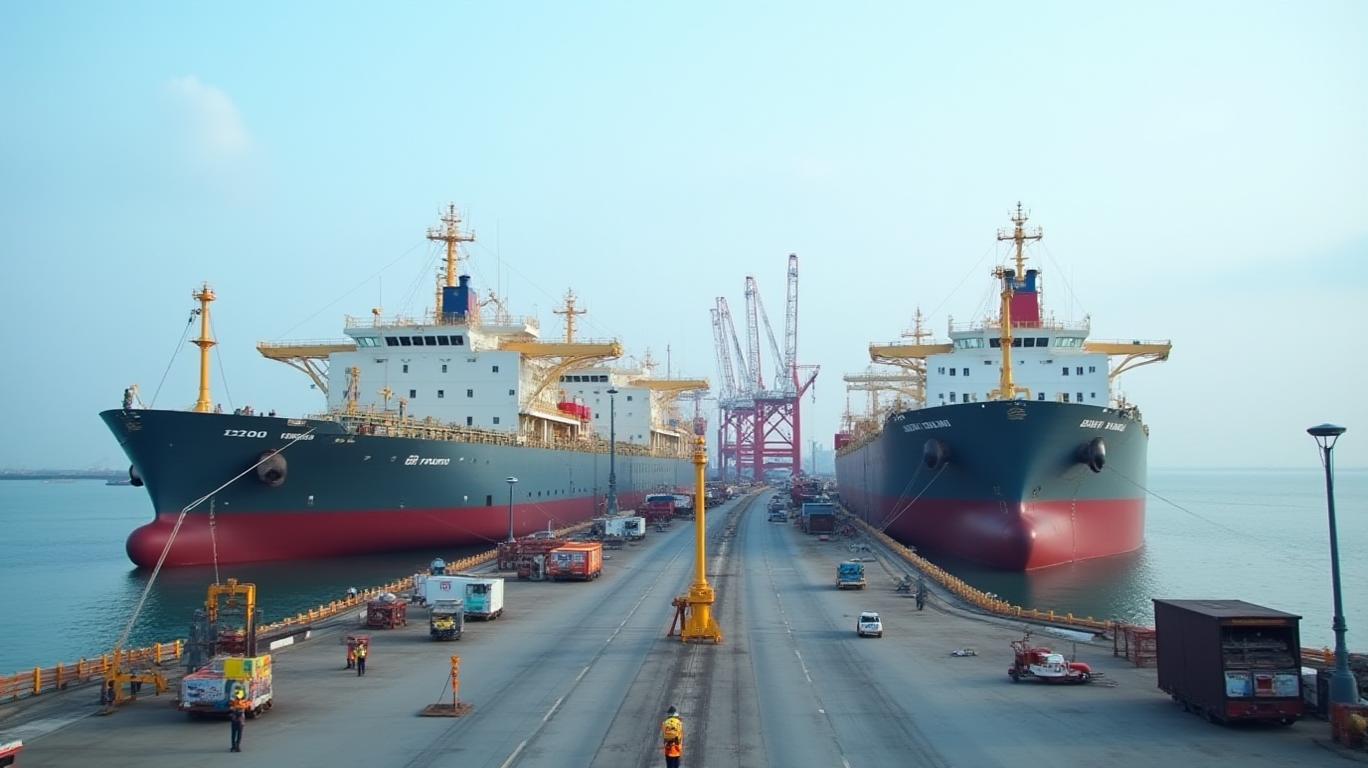Navigating the Tariff Storm: Vietnam’s Strategic Trade Talks with the U.S. and Investment Implications
Vietnam faces a pivotal crossroads as it engages in high-stakes trade negotiations with the U.S. amid the threat of 46% countervailing tariffs on its exports—a rate five times higher than Vietnam’s average import tax on U.S. goods. The tariffs, initially paused until July 2025, loom over a Vietnamese economy deeply reliant on U.S. markets, which account for $143 billion in annual exports. This article dissects the risks, opportunities, and strategic moves shaping Vietnam’s economic trajectory—and what investors should watch next.
The Tariff Threat and Sectoral Fallout
The tariffs target Vietnam’s key export sectors:
- Electronics ($70.5B in U.S. exports in 2024): Heavyweights like Samsung and Foxconn face margin erosion and supply chain disruptions.
- Textiles/Footwear ($46.2B): Labor-intensive industries in provinces like Long An risk mass layoffs, disproportionately affecting female workers.
- Furniture ($28.3B): Vietnam’s position as Asia’s top U.S. wood furniture exporter is under siege.
- Agriculture ($8.5B): Coffee and cashew farmers face price competition from non-tariff markets.

Vietnam’s Playbook: Defense and Diversification
Prime Minister Pham Minh Chinh’s government has adopted a dual strategy to mitigate risks:
Red Ocean: Immediate Mitigation
- Decree 73/2025/NĐ-CP: Cut import duties on 16 U.S. goods categories to 0–15%, demonstrating compliance with global trade norms.
- Soft Loans and Tax Relief: Allocate funds to businesses hit by tariffs, including support for young homebuyers to buoy domestic demand.
- Trade Fraud Crackdown: Prioritize addressing U.S. concerns on counterfeiting to buy negotiating leverage.
Blue Ocean: Long-Term Transformation
- FTA Diversification: Negotiate new pacts with India, Brazil, and Middle Eastern markets to reduce U.S. dependency. Vietnam’s existing 17 FTAs (e.g., CPTPP, RCEP) are being leveraged to open new channels.
- Industry 4.0 Shift: Shift from OEM manufacturing to ODM/OBM (Original Design/Brand Manufacturing) to capture higher-value exports.
- Domestic Consumption Drive: Boost e-commerce platforms to promote “Made in Vietnam” goods, targeting its 100M-strong consumer base.
Data-Driven Insights for Investors
The VN Index has underperformed regional peers amid trade war fears, down 8% YTD. However, sectors like tech and consumer goods—key beneficiaries of domestic consumption drives—show resilience.
While U.S. exports grew 7% in 2024, Vietnam’s trade with RCEP partners surged 12%, signaling diversification momentum.
Risks and Opportunities
Risks:
- If tariffs go into effect, Vietnam’s GDP growth could slip below its 8% target. The electronics sector alone employs 1.2 million workers, raising social stability concerns.
- U.S.-China tensions may pressure Vietnam as a key stop in global supply chains.
Opportunities:
- Tech Upgrades: Firms investing in automation (e.g., semiconductor assembly) or green energy (e.g., solar panel exports) could thrive.
- Regional Trade: Companies exposed to India, ASEAN, or Middle Eastern markets (e.g., logistics firms, agricultural exporters) may outperform.
- Domestic Plays: E-commerce platforms (e.g., Shopee, Lazada) and consumer staples firms could benefit from a “buy local” push.
Conclusion: A Test of Resilience, a Blueprint for Growth
Vietnam’s response to the U.S. tariff threat underscores its economic dexterity. With $123.5B in U.S. trade surplus and 8% GDP growth ambitions, Hanoi’s strategy balances short-term pragmatism (tariff negotiations, soft loans) with long-term structural reforms (FTA diversification, Industry 4.0).
Investors should prioritize:
1. Export Diversification Plays: Firms with exposure to Vietnam’s new FTA partners (e.g., Middle Eastern infrastructure projects).
2. Tech-Savvy Manufacturers: Companies transitioning to ODM/OBM models, such as footwear brands investing in design IP.
3. Domestic Consumption Firms: E-commerce platforms and food producers capitalizing on rural delivery expansion.
The stakes are high, but Vietnam’s record of navigating trade wars—having weathered U.S. steel tariffs and tech sanctions on China—suggests it may emerge stronger. As Prime Minister Chinh stated, this is not just a crisis but an “inflection point” for economic rebalancing. For investors, the challenge is to separate the noise of tariffs from the signal of Vietnam’s long-term potential.
Foreign direct investment (FDI) in tech and green sectors grew 15% annually since 2020, pointing to the country’s evolving strengths. The next six months will test whether Hanoi’s “calm, proactive” strategy can turn this storm into an opportunity.









